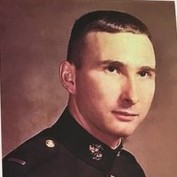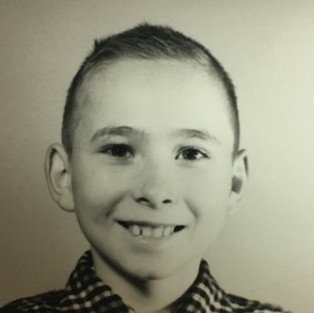Robert J Kuhlman-MIA in Vietnam
- Vicki Ekmark
- Jan 15, 2021
- 7 min read
Updated: Jan 12, 2023
Scroll to the bottom to see another lost warrior -
Click ALL POSTS at the top of this page to return to blog table of contents.
Click below to listen to the audio blog.
Click on any picture below to activate slideshow.
When I was eleven years old and in 6th grade, I attended a very small school which only had about fifty kids. I'm not proud of the things I did that year as I tried to prove that I was better than everyone else. I had swearing contests with boys (I didn't quit until I won) and
during the 1964 election, I paraded around the playground screaming "go all the way
for LBJ” in support of Lyndon Johnson for president (I watched a lot of news programs on TV). What I didn’t really understand though was that Johnson wanted to send more and more American soldiers to Vietnam. His thinking was based on an unproven idea that if Communism took root there, the doctrine could spread throughout Asia and beyond, perhaps even to the United States. Johnson was elected and proceeded to expand American involvement in the Vietnam War despite national opposition. As a result, over 2.7 million American military personnel, including Robert J. Kuhlman from Boston, Indiana, were tasked with protecting the United States from this supposed threat.
Robert Kuhlman, who friends sometimes called “cool man,” attended Boston High School, which served a small agricultural community. He was very active in Track and 4-H. After high school, he went to Tulane University on a scholarship from the Navy, although he ended up enlisting in the Marine Corps. At Tulane, he participated in sports (Track), the NROTC, and was a member of the Alpha Sigma Phi fraternity.


In 1968, Kuhlman was sent to Vietnam to serve as a navigator on an A6 Intruder. On Christmas, his parents received a nice holiday greeting from his commanding officer (see photos). On January 17, 1969, though, only a short time after he had arrived, Lt. Kuhlman’s plane, piloted by Captain Edwin “Jim” Fickler, was struck by enemy fire and crashed approximately one mile south of a primary east/west road running from the A Shau Valley to Hue City. Search and rescue crews were launched to look for the two men from the air. Unfortunately, no parachutes had been seen, no emergency electronic beepers had been heard, and no voice contact had been established. Due to heavy enemy activity in the area, ground searches were not possible. At the time of the crash, both men were listed as "missing in action” (go to Captain Fickler’s blog on this website), but ten years later, Lt. Kuhlman's status was changed to KIA since there was no evidence to support that he was still alive. I look at the small red circle on the map designating where they crashed and wonder; it seems like smaller things have been found in larger areas.


On left:
A Shau Valley
(looking
south)
My brother Steve, a Vietnam veteran, also looked at the map where the crash occurred. He told me he was in that same place in 1965 and it was a very rugged area. Steve offered this explanation: "At the time he was shot down, he was likely killed in the crash. If the North Vietnamese or Viet Cong went to the crash site, they would have scavenged all of the equipment they could and quite possibly buried the two crewmen."

It is a tragedy that Lt. Kuhlman died so young and never got to experience more of life. Since he was very active in 4-H in high school, a new building was put up at the Fairgrounds in Richmond, Indiana. It was named the Kuhlman building in his honor. His picture hangs in the lobby with some other memorabilia (see photo left of his sister and mother).
Ten years after Lt. Kuhlman was lost, his father died of asphyxiation, smothered by corn in a bin during a farming accident. Lt. Kuhlman’s mother lived to be 97 years old before passing in 2014. She was very active in the National League of POW/MIA Families as well as President of the Indiana Chapter. He is survived by his sister Sandra who told me she “is at peace with his loss, although it is certainly a tragedy that he died so young and never got to experience so much of life.” She also said, “I doubt if [his] remains will ever be found.” A big thank you to her for providing pictures and other information for this story.
Below are some new pictures recently provided by comrades of Lt. Kuhlman. They act as reminders of his life and service to his country. We must never forget the sacrifices that our military make on our behalf no matter what the politics of it all might be.

Vietnam Post

Lt. Kuhlman coming out of a hooch.

Lt. Kuhlman working on sandbags.

Lt. Kuhlman on left.
The war in Vietnam lasted for nineteen years during which time 58,220 service members were killed and 304,000 were wounded. The percentage of soldiers who died in Vietnam is similar to other wars, but amputations or crippling wounds were 300 percent higher than in WW2, leaving 75,000 Vietnam vets severely disabled. Following is a link to Lt. Kuhlman on The Wall of Faces, an online page commemorating his place on the Viet Nam Memorial Wall in Washington DC: https://www.vvmf.org/Wall-of-Faces/28975/ROBERT-J-KUHLMAN-JR/
General Statement From the Defense POW/MIA Accounting Agency:
“The U.S. and Vietnam have cooperated closely for over three decades to provide the fullest possible accounting of all Americans missing from the Vietnam War. Vietnamese cooperation at all levels of the government and an overwhelming support by the people of Vietnam has helped the U.S. account for 728 Americans since 1973. There are 1,245 Americans still missing in Vietnam.” [including Lt. Kuhlman]
The response to my letter sent to the Defense POW/MIA Accounting Agency inquiring about Lt. Kuhlman: “On January 17, 1969, an A-6A Intruder (bureau number 152586) with two crew members departed Da Nang Air Base for a direct air support/armed reconnaissance mission over the A Shau Valley. The crew made radio contact with their forward air controller (FAC) during the flight, and several minutes later the FAC saw several explosions near one of the Intruder's targets. After the explosions, the FAC attempted but was unable to reestablish contact with the Intruder, and search and rescue operations were initiated. Searches continued for several weeks but found no evidence of the missing aircraft or crew.”
--Sgt. Jarel C. Chugg Guerra
To read more information about Lt. Kuhlman and many others, I highly recommend the Task Force Omega website. TFO is a non-profit, tax-exempt POW/MIA organization dedicated to the full accounting and return of all prisoners of war as well as those missing in action during the defense of our country. Below is the TFO page for Lt. Kuhlman:
Name: Robert John Kuhlman
Rank/Branch: Major/US Marine Corps
Unit: Marine Air Group 11, 1st Marine Air Wing
Date of Birth: 25 August 1944
Home of Record: Richmond, IN
Date of Loss: 17 January 1969
Country of Loss: South Vietnam
Loss Coordinates: 160700N 1072100E (YC470921)
Status in 1973: Missing in Action
Category: 4
Aircraft/Vehicle/Ground: A6A “Intruder”
Other Personnel In Incident: Edwin J. Fickler (missing)
SYNOPSIS: With the addition of the A6A to its inventory, the 1st Marine Air Wing (MAW) had the finest all-weather attack/bombing aircraft in the world. It displayed great versatility and lived up to the expectations of those who pushed its development after the Korean War. At the time it was the only operational aircraft that has a self-contained all-weather bombing capacity including a moving target indicator mode. In this role it was used rather extensively in the monsoon season not only in South Vietnam, but also in Laos and over the heavily defended areas of North Vietnam. The usual bomb load was 14,000 pounds.
When North Vietnam began to increase its military strength in South Vietnam, NVA and Viet Cong troops again intruded on neutral Laos for sanctuary, as the Viet Minh had done during the war with the French some years before. This border road was used by the Communists to transport weapons, supplies and troops from North Vietnam into South Vietnam, and was frequently no more than a path cut through the jungle covered mountains. US forces used all assets available to them to stop this flow of men and supplies from moving south into the war zone.
On 17 January 1969, Capt. Edwin J. Fickler, pilot, and then 1st Lt. Robert J. Kuhlman, bombardier/navigator, comprised the crew of an A6A Intruder on a direct air support/armed reconnaissance mission east of the infamous A Shau Valley, Quang Tin Province, South Vietnam. Their mission, as well as that of American and allied ground troops they were supporting, was to cut the NVA's extension of the Ho Chi Minh Trail as it ran through the northwestern region of South Vietnam.
At 2125 hours, Capt. Fickler and 1st Lt. Kuhlman were providing close air support for embattled US and allied troops operating along the east rim of the A Shau Valley. After completing an attack pass on a known enemy position hidden in the rugged jungle covered mountains, the Intruder pulled off target and was struck by enemy ground fire. It was seen by friendly forces to crash approximately 1 mile south of a primary east/west road running from the east side of the A Shau Valley to Hue City. A second primary road branched off of the main road and ran to DaNang. These roads were a major part of the NVA's extended infiltration route.
Search and rescue (SAR) aircraft were immediately launched and initiated a visual and electronic search for Capt. Fickler and 1st Lt. Kuhlman. During the search operation, no parachutes were seen, no emergency electronic beepers heard and no voice contact could be established with either crewman. Further, a ground search was not possible because of heavy enemy activity in the area of loss. At the time the formal search was terminated, Edwin Fickler and Robert Kuhlman were listed as Missing in Action.
If Edwin Fickler and Robert Kuhlman died in the loss of their Intruder, each man has a right to have his remains returned to his family, friends and country. However, if they were able to eject their crippled aircraft, they most certainly could have been captured and their fate, like that of other Americans who remain unaccounted for in Southeast Asia, could be quite different. Either way, there is little doubt the Vietnamese could return them or their remains any time they had a desire to do so.
Since the end of the Vietnam War, over 21,000 reports of American Prisoners, missing and otherwise unaccounted for have been received by our government. Many of these reports document LIVE American Prisoners of War remaining captive throughout Southeast Asia TODAY.
Another lost warrior:

On April 26, 1968 SFC Jerry "Mad Dog" Shriver disappeared while leading a Montagnard Hatchet force in Laos against a superior number NVA force. Shriver was a legend among the Special Forces community. The NVA had a large bounty for whoever captured him. No trace of Shriver has ever been found since.




























Comments